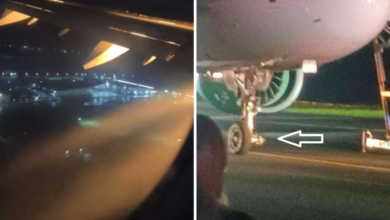NASA launches mission to intercept ‘God of Chaos’ asteroid nearing Earth’s orbit | Trending

NASA has recently launched a mission to intercept a near-Earth asteroid nicknamed “God of Chaos.” For this mission, the US space agency deployed OSIRIS-APEX, after the spacecraft’s return from deep space. The asteroid Apophis, or God of Chaos, will brush past Earth’s orbit, only 20,000 miles away from the surface in 2029. Its close proximity could even result in Apophis’ visibility in the Northern Hemisphere. The image shared NASA shows Earth from space(Instagram/@nasa) Apophis, ‘God of Chaos’ asteroidNamed after an ancient Egyptian deity, Apophis is a 1,000-foot-wide asteroid. It was first discovered in 2004 and is expected to fly Earth on April 13, 2029. During that time, OSIRIS will intercept the asteroid to study any changes made its earthly encounter. According to scients, such an asteroid passes Earth every 7,500 years. Wrap up the year gone & gear up for 2024 with HT! Click here Experts initially said there was a 3 per cent chance of collision, only to realise there would be no impact at all. Apophis is expected to make a return trip in 2036. The asteroid’s close encounter with Earth will alter its orbit and length of day. It could also lead to landslides and quakes on Apophis. ALSO READ: NASA beams high-definition cat video back to Earth from deep space, calls it a giant leap in mission to Mars NASA’s mission to intercept ApophisAfter a seven-year mission in deep space to collect samples from the Bennu asteroid in September, OSIRIS is being redeployed for another mission. The spacecraft is being renamed from OSIRIS-REx to OSIRIS-APEX, an acronym for Origins, Spectral Interpretation, Resource Identification, and Security – Apophis Explorer. OSIRIS-APEX will descend to within 16 feet of the asteroid’s surface and use its thrusters to stir up rocks and dust, allowing scients to study what lies beneath. In a press release last week, the mission’s principal investigator, Dani Mendoza DellaGiustina, said, “The close approach is a great natural experiment.” “We know that tidal forces and the accumulation of rubble pile material are foundational processes that could play a role in planet formation. They could inform how we got from debris in the early solar system to full-blown planets,” the NASA expert added as per Fox News. Unlock a world of Benefits with HT! From insightful newsletters to real-time news alerts and a personalized news feed – it’s all here, just a click away! -Login Now!







